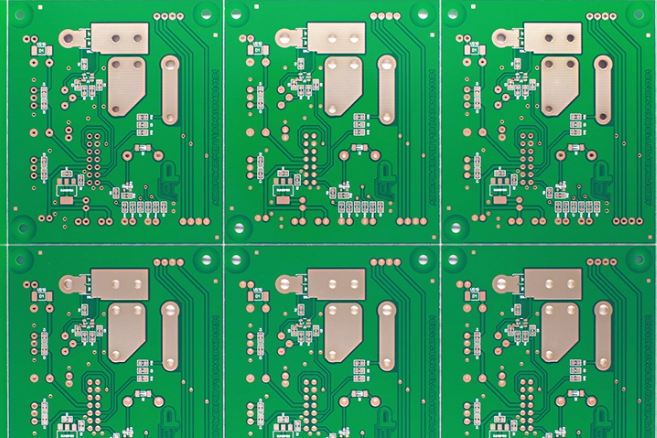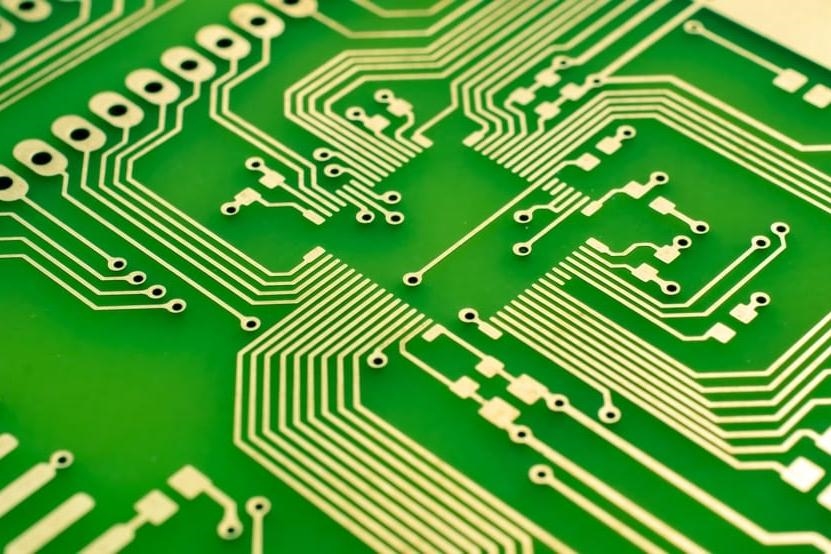Are you wondering how a glossy solder mask affects Automated Optical Inspection (AOI) systems in PCB manufacturing? In short, a glossy finish can create reflections and glare, potentially interfering with the accuracy of AOI systems by causing false positives or missed defects. However, with the right setup and adjustments, these challenges can be managed effectively. In this comprehensive guide, we’ll dive deep into the relationship between glossy solder masks and AOI systems, exploring the potential issues, solutions, and best practices to ensure high-quality PCB production.
What is a Solder Mask and Why Does Finish Matter?
A solder mask is a protective layer applied to a printed circuit board (PCB) to prevent solder from bridging between conductive traces and to shield the board from environmental damage. It also helps define the areas where components will be soldered. Solder masks come in various finishes, with glossy and matte being the most common. The finish of the solder mask isn’t just about aesthetics; it plays a significant role in manufacturing processes, especially during inspection stages like Automated Optical Inspection (AOI).
A glossy solder mask has a shiny, reflective surface, often chosen for its smooth appearance and ease of cleaning. On the other hand, a matte finish has a dull, non-reflective surface that can reduce glare. While both finishes serve the same protective purpose, their interaction with light can impact how AOI systems detect defects on the PCB. Understanding this interaction is key to optimizing inspection accuracy and ensuring the reliability of the final product.
What is Automated Optical Inspection (AOI) and How Does It Work?
Automated Optical Inspection, or AOI, is a critical quality control process in PCB manufacturing. It uses high-resolution cameras and advanced image-processing software to scan the surface of a PCB for defects such as missing components, misalignments, solder joint issues, and other manufacturing errors. AOI systems are designed to detect issues early in the production process, reducing the risk of defective boards reaching the end user.
The system works by capturing images of the PCB under controlled lighting conditions and comparing them to a pre-programmed "golden" reference image or design data. Any deviations, such as unexpected reflections or shadows, can be flagged as potential defects. This is where the finish of the solder mask becomes important. A glossy surface can reflect light in unpredictable ways, potentially confusing the AOI system and leading to inaccurate results.
How Glossy Solder Masks Affect AOI Systems
The primary challenge with a glossy solder mask during AOI is its reflective nature. When light from the AOI system’s cameras hits a glossy surface, it can create glare or hotspots. These reflections may be interpreted as defects or obscure actual issues on the board. Let’s break down the specific impacts:
- False Positives: Reflections from a glossy solder mask can appear as bright spots or anomalies in the captured image, causing the AOI system to flag non-existent defects. This can slow down production as operators must manually verify each flagged issue, increasing costs and time.
- Missed Defects: Glare can mask real defects, such as insufficient solder or misaligned components, by blending them into the reflective background. This can result in defective boards passing inspection, leading to potential failures in the field.
- Inconsistent Results: The angle and intensity of light used in AOI systems can vary, and glossy surfaces may reflect light differently depending on these factors. This inconsistency can make it harder for the system to produce reliable results across multiple boards.
Studies in PCB manufacturing have shown that reflection-related errors can increase inspection time by up to 15-20% when using glossy finishes compared to matte ones under standard AOI lighting conditions. While specific data may vary depending on the equipment and settings, it’s clear that surface reflectivity plays a significant role in inspection efficiency.
Comparing Glossy and Matte Solder Masks in AOI Performance
To better understand the impact, let’s compare how glossy and matte solder masks perform under AOI systems. Matte finishes, due to their non-reflective nature, generally provide a more uniform surface for imaging. This reduces the likelihood of glare and improves the clarity of the captured image, making it easier for the AOI system to detect true defects.
In contrast, glossy finishes can enhance the aesthetic appeal of a PCB and may offer better resistance to certain contaminants due to their smoother surface. However, the trade-off is the potential for light reflection issues during inspection. Manufacturers often face a dilemma: choose a glossy finish for design or functional reasons and risk AOI challenges, or opt for a matte finish to streamline the inspection process.
For instance, in high-volume production environments where speed and accuracy are critical, a matte finish might reduce AOI error rates by a notable margin—sometimes as much as 10-15% fewer false positives compared to glossy masks under similar conditions. However, advancements in AOI technology and lighting adjustments are narrowing this gap, making glossy masks more viable with the right setup.
Solutions to Mitigate Glossy Solder Mask Challenges in AOI
While glossy solder masks can pose challenges for AOI systems, there are several strategies to minimize their impact and ensure accurate inspections. Here are some practical solutions for PCB manufacturers:
1. Optimize Lighting Conditions
Adjusting the lighting setup in AOI systems can significantly reduce reflections from glossy surfaces. Using diffused or polarized light sources can help minimize glare by scattering the light evenly across the PCB surface. Some modern AOI systems also allow for customizable lighting angles, which can be tuned to avoid direct reflections off glossy solder masks.
2. Fine-Tune AOI Software Parameters
AOI systems rely on software algorithms to interpret images and detect defects. By adjusting the sensitivity and threshold settings, manufacturers can reduce the likelihood of false positives caused by reflections. For example, increasing the tolerance for bright spots in specific areas of the board can prevent the system from flagging harmless glare as a defect.
3. Use Advanced AOI Equipment
Newer AOI systems are equipped with enhanced imaging technologies, such as 3D inspection capabilities and multi-angle cameras, which can better handle reflective surfaces. These systems can capture images from different perspectives, reducing the impact of glare and providing a more accurate analysis of the PCB surface.
4. Consider Hybrid Inspection Approaches
In some cases, combining AOI with other inspection methods, such as X-ray inspection for internal defects, can compensate for the limitations of optical systems on glossy surfaces. While this may increase costs, it ensures a higher level of quality control for critical applications.
5. Evaluate Solder Mask Selection Early
During the design phase, consider the inspection process when choosing between glossy and matte solder masks. If a glossy finish is necessary for functional or aesthetic reasons, plan for additional AOI calibration or testing to account for potential reflection issues. Collaboration between design and manufacturing teams can help strike the right balance.
Best Practices for PCB Manufacturers Using Glossy Solder Masks
For manufacturers committed to using glossy solder masks, adopting best practices can make a big difference in maintaining AOI accuracy and overall production efficiency. Here are some actionable tips:
- Conduct Pre-Production Testing: Before full-scale production, run test boards with glossy solder masks through the AOI system to identify potential reflection issues. Use these results to adjust lighting, camera angles, or software settings as needed.
- Standardize Inspection Conditions: Ensure consistent lighting and environmental conditions during AOI to minimize variability in results. Even small changes in ambient light can affect how glossy surfaces reflect, so control the inspection environment tightly.
- Train Operators: Equip AOI operators with the knowledge to recognize and address reflection-related errors. Skilled operators can quickly distinguish between false positives caused by glare and actual defects, reducing downtime.
- Document Findings: Keep detailed records of AOI performance with glossy solder masks, including error rates and solutions applied. This data can inform future projects and help refine processes over time.
The Future of AOI Systems and Glossy Solder Masks
As technology advances, the challenges posed by glossy solder masks in AOI systems are becoming more manageable. Innovations in machine vision, such as artificial intelligence (AI) and machine learning, are enabling AOI systems to better distinguish between true defects and artifacts like reflections. AI-powered systems can learn from past inspections, adapting to the unique characteristics of glossy surfaces and reducing error rates over time.
Additionally, improvements in solder mask materials are providing manufacturers with more options. Some newer glossy finishes are formulated to reduce reflectivity while maintaining their smooth appearance, offering a compromise between aesthetics and inspection compatibility. As these trends continue, the impact of glossy solder masks on AOI systems is likely to diminish, allowing manufacturers greater flexibility in their design choices.
Conclusion: Balancing Aesthetics and Inspection Accuracy
The use of a glossy solder mask can add a polished look to a PCB and provide functional benefits, but it also introduces challenges for Automated Optical Inspection (AOI) systems due to its reflective properties. Reflections and glare can lead to false positives, missed defects, and inconsistent results, potentially slowing down production and increasing costs. However, with the right strategies—such as optimizing lighting, fine-tuning software, and using advanced AOI equipment—manufacturers can mitigate these issues and achieve reliable inspection outcomes.
At ALLPCB, we understand the importance of balancing design preferences with manufacturing efficiency. By staying informed about the impact of solder mask finishes on AOI systems and implementing best practices, you can ensure high-quality PCB production without compromising on aesthetics. Whether you choose a glossy or matte finish, careful planning and calibration are the keys to success in modern PCB manufacturing.








